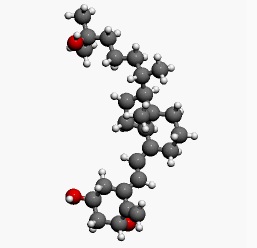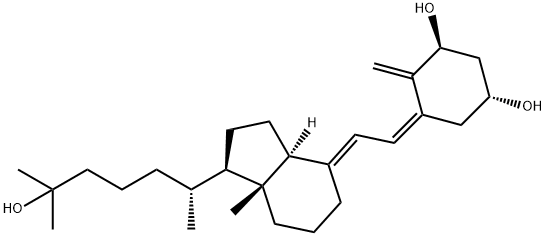Calcitriol is the active form of vitamin D and is also a kind of hormones in the body. It plays an important role in the regulation of calcium and phosphorus concentration. It can increase the blood calcium level by increasing the intestinal absorption of calcium and can also increase the release of the bone calcium release for increasing the blood calcium levels. This study was first conducted and reported by Michael F. Holick in 1971. The basic principle of action model of calcitriol in many cases is through binding with the vitamin D receptor (the VDR), e.g., the ligand-receptor complex forming between calcitriol and its receptor in the intestinal epithelial cells cytoplasm can be transferred to the nucleus for being as the transcriptional factor in promoting the expression of calcium-binding protein. The increased level of calcium-binding proteins can help the cell to actively transport of more calcium ions, thereby increasing the calcium absorption level. Calcium absorption while maintaining electrical neutrality also requires transporting anions, mainly the absorption of inorganic phosphate ions, so calcitriol also promote the absorption of phosphorus.
Clinically, this drug can be used in the treatment of hypocalcemia, hypoparathyroidism (adult), osteomalacia, rickets (infants), chronic kidney disease, renal osteodystrophy, osteoporosis, as well as the prevention of glucocorticoid induced osteoporosis.

Calcitriol-dimensional molecular structure
The above information is edited by the chemicalbook of Dai Xiongfeng.

